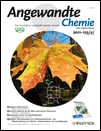Structural and Electrochemical Diversity in LiFe1−δZnδSO4F Solid Solution: A Fe-Based 3.9 V Positive-Electrode Material†
The authors are thankful to G. Ferey, C. Masquelier, M. Armand, N. Recham for helpful discussions and ALISTORE-ERI for supporting this work. P.B. thanks the Japan Society for the Promotion of Sciences for a JSPS Fellowship at the University of Tokyo.
Graphical Abstract
Übergangsmetallhaltige Fluorsulfatverbindungen werden als Anodenmaterial für Lithiumionenbatterien intensiv untersucht. Durch den Einbau von Zn in LiFeSO4F kann die Tavorit-Struktur in zwei verschiedene Polymorphe mit Sillimanit- und Triplit-Struktur überführt werden (siehe Bild). Diese neuen Phasen zeigen gegenüber Li Fe2+/Fe3+-Redoxpotentiale von 3.6 und 3.9 V.





